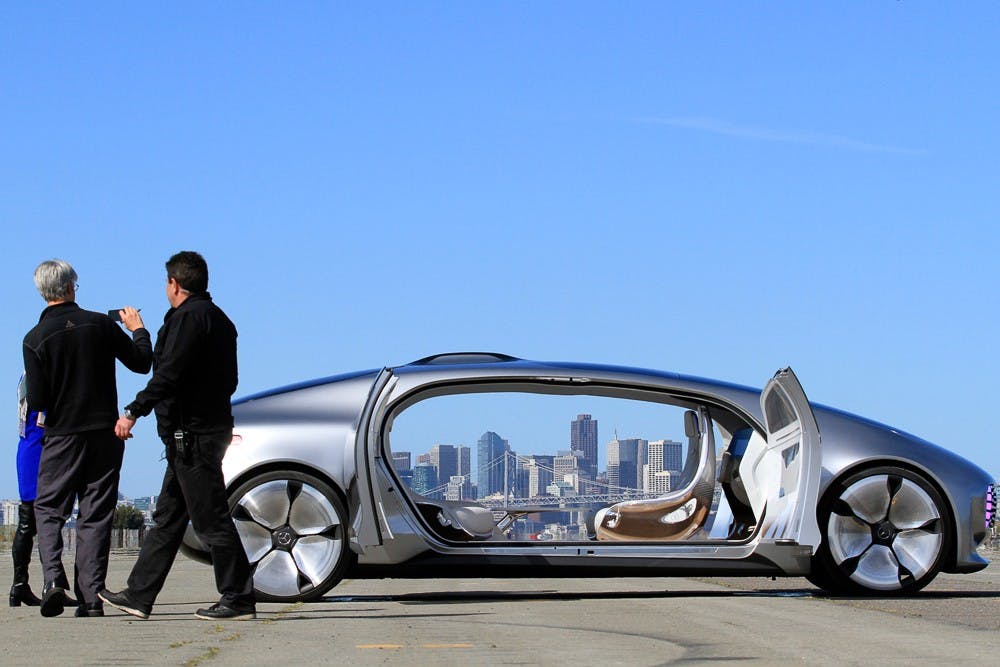They're being called the "cars of the future."
The autonomous car scene has blown up in recent years, with companies such as Google and California automaker Tesla Motors experimenting to find the best methodology behind new vehicle models. NASA jumped into the fray with its own driverless car, one that could be driven with a remote controller.
The idea of a self-driving car is certainly gaining steam with each announcement of a breakthrough or each new company joining in the fun with their own takes. But there are questions that have to be raised such as if they are safe? What does the law say about them? And how soon until we can have our own?
Before we answer those questions, it’s a good idea to understand just what an autonomous car is. Simply put, these cars require nearly no input from passengers and can maneuver around using radar and other features to see the area around it.
Of course, different makers use different methods to pilot these driverless vehicles. On March 22, British auto supplier Delphi took an autonomous Audi on a successful journey from California to New York that took nine days over 15 states and 3,400 miles, according to technology website Tech Times.
For example, Delphi's car used radars and wireless communication technologies to enhance those radars. On the other hand, Google’s car uses GPS in tandem with radars and lasers to map the area around the vehicle in a 360-degree motion, according to a 2014 article by The Guardian.
Not having to pilot a car means that one could relax while in transit and let the machinery handle the job. It would certainly make the drive from Arizona to California a little more entertaining.
However, there are safety concerns, mainly the unpredictability of the road. Other drivers, poor weather, traffic and even “complex road rules,” all play a factor into what these cars would need to learn, according to an opinion-editorial by Nidi Kalra for the New York Times.
In a September interview with the Wall Street Journal (via MarketWatch), Tesla CEO Elon Musk mentioned the safety of the cars over human abilities.
“They will be a factor of 10 safer than a person (at the wheel)," Musk said.
A 2013 article from tech website Technology Review reported that tests of Google’s vehicles had the cars making safer maneuvers than those of professional drivers. However, a 2014 article from the same site mentioned a host of obstacles such as weather and road hazards that Google admitted to still be working on throughout the tests.
Also still in the works are rules by safety regulators. Arizona Rep. Jeff Dial, R-Chandler, introduced HB 2679 bill in 2012, which sought regulations for driverless cars. It was approved by only two members of the Transportation Committee, according to The East Valley Tribune, but Dial has mentioned another go at a later date.
A bill similar to Dial’s was passed in Nevada. In California, the Department of Motor Vehicles will begin issuing licenses for autonomous car operators in September of this year, according to tech blog Tech Crunch.
How far away until we officially see these everywhere? In the same interview with the Wall Street Journal, Musk mentioned a timeframe of five to six years from 2014. He went on to say that recognizing obstacles in the road is still the biggest hindrance for driverless cars. Google has mentioned a similar time frame as well.
If these companies can get over the multiple hurdles in the way (physical and otherwise), driverless cars have the potential to be the next big thing in automotive technology. With states still fleshing out regulations and the technology still improving, it’s going to take some time before these are widely accepted.
But still, the idea of cars not requiring any input at all is tantalizing. When you consider how many other vehicles could become autonomous, the possibilities are staggering.
Reach the reporter at djulienr@asu.edu, or follow him on Twitter @legendpenguin
Like The State Press on Facebook and follow @statepress on Twitter.




